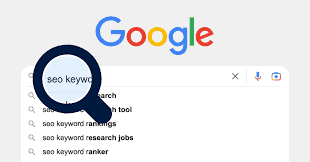Hey there man! Forget complicated jargon and confusing tutorials. This guide is designed for beginners and will teach you to master the art of keyword research.
What the Heck is Keyword Research Anyway? (And Why Should You Care?)
Keyword research is basically exploring search queries to create content that both pleases users and ranks well. Think of it like this: Google is a giant librarian, and keyword research is how you figure out what people are asking for so you can give it to them. Over time, Google has become incredibly good at figuring out what people mean, regardless of how they phrase their requests. This means Google search results are the primary source of information for keyword research and keyword research tools use Google data.
Why bother with this? Because each webpage ranks in relation to a keyword. If you want your content to be found, you need to choose a main topic (a.k.a. keyword) for your page. This helps Google, the librarian, serve your page to people looking for that exact topic. Also, it helps you to:
- Find keywords that are easy to rank for.
- Discover which keywords indicate a searcher is ready to buy.
- Understand what content type will help you rank well.
Stop Guessing, Start Ranking: The Lazy Person’s Guide to Free Keyword Research
Ready to dive in? You don’t need expensive tools to get started. You can actually do basic keyword research for free using Google.
Here’s your super-simple, 5-minute method:
- Go Incognito: Open a new Chrome Incognito window ( ⌘ + Shift + n on Mac, or Ctrl + Shift + n on Windows/Linux/Chrome OS). This will give you unbiased search results.
- Type Your Seed Keyword: Enter your main topic. For example, if you sell learn-to-knit kits, you might type in “learn to knit”.
- Analyze the Results:
- Content Types: See what kinds of content are ranking high. Are there videos? Step-by-step tutorials? This will give you an idea of what Google thinks people want.
- “People Also Ask”: Pay close attention to the questions in the “People Also Ask” section. These are common questions that searchers have on your topic, and can be great for content ideas.
- “Related Searches”: Scroll to the bottom of the page and check “Related Searches”. Here, you can find even more keywords.
By doing this, you can start to understand what people are looking for and how to create content that satisfies their needs.

The Secret Weapons of SEO: Tools That Will Make You a Keyword Ninja
Free methods are great, but they can only take you so far. Keyword research tools unlock a world of opportunity. These tools help you find keywords that are easy to rank for and signal buying intent.
Here’s how to use a tool, step-by-step:
- Pick Your Weapon: Choose a keyword research tool. Semrush, Ahrefs, and Ubersuggest are popular choices. Semrush will be the tool used in this guide. You can create a free Semrush account to follow along.
- Enter Your Keyword: In Semrush, click on “Keyword Overview” and enter your keyword. We’ll use “learn how to knit” for this example.
- Unlock Easy Keywords: Look at the “Keyword Difficulty” score. If your site is new, aim for keywords labeled “Easy” or “Very easy”. If your keyword is too difficult, use the “Keyword Magic Tool” to find related, easier keywords.
- Uncover Searcher Intent: Look at the search intent behind a keyword. Semrush labels them as “Informational,” “Navigational,” “Commercial,” or “Transactional”. This tells you why someone is searching and if they are ready to buy.
- Find High Volume Keywords: Check the monthly search volume. This is an estimate of how many searches that keyword gets per month. If you’re choosing between two keywords, go with the higher volume.
Keyword Difficulty: What It Is, and How to Use it to Your Advantage
Keyword Difficulty is measured as a percentage, from 0-100, and is calculated using a logarithmic scale. This might seem counterintuitive at first, so look at how Semrush labels the keywords to understand the difficulty level.
Semrush labels keywords using the following scale: * Very easy 0-14 * Easy 15-29 * Possible 30-49 * Difficult 50-69 * Hard 70-84 * Very hard 85-100
If you are working with a new website, it is best to focus on the keywords that have “Easy” or “Very easy” difficulty labels.
The Secret Code of Search Intent: Know What They Want, and You’ll Win
Search intent refers to the goal of the searcher when they use a particular keyword. Semrush has four intent types:
- Informational (I): The searcher wants to learn more about a topic. Example: “What is Blockchain?”.
- Navigational (N): The searcher is trying to find a specific website or page. Example: “Amazon”.
- Commercial (C): The searcher is comparing products or services and has buying intent. Example: “Best laptop for college students”.
- Transactional (T): The searcher is ready to buy. Example: “Buy Nike running shoes model x123 black”.
If you have a business, prioritize commercial and transactional keywords. They are often easier to rank for and signal that people are ready to buy.
Steal Your Competitor’s Secrets: How to Use Keyword Gap Analysis to Become #1
Keyword gap analysis is like having access to your competitor’s playbook. Using tools like Semrush, you can:
- Find keywords your competitors rank for, but you don’t.
- Find keywords your competitors rank higher for.
Then you can use that info to:
- Target keywords that will have the biggest impact.
- Create high-quality content that’s even better than theirs.
- Go back to your existing content and improve it.
To use the Keyword Gap Analysis tool, enter your domain name and the names of your competitors. You can filter the results to see keywords that are easy to rank for and have a commercial or transactional intent.
Free Tools: The Best Kept Secrets of Keyword Research
While paid tools are powerful, there are also great free keyword research options:
- Google Keyword Planner: You’ll need a Google Ads account, but it can help with finding keyword ideas for your content.
- Google Trends: Use this tool to find trending topics, which can help you discover new opportunities.
- Ahrefs’ Free SEO Tools: Ahrefs offers some free tools like the Keyword Generator and SERP Checker, which provide limited data.
Steal This Strategy: How to Target Buyer Keywords and Make Bank
Want to know a secret? Here’s a strategy that businesses use to make bank. Target commercial or transactional keywords. While these may have lower search volume, the searchers have buying intent.
To make this strategy work, you need to:
- Show buyers how your product solves their problems.
- Help buyers compare features and prices.
- Convince buyers that your solution is the best.
SEO Jargon Demystified: The Essential Vocabulary of Keyword Research
Ready to speak the language of SEO pros? Here are some common terms you’ll come across:
- Short-tail keywords: Broad and short keywords such as “insurance”. Because of the lack of detail, the intent is unclear.
- Long-tail keywords: Detailed phrases that are not broad, such as “how to submit a sitemap to bing”. The intent behind these keywords is clear.
- Branded keywords: Keywords that include a brand or product name, such as “home depot credit card login”.
- Local keywords: Keywords that contain a geographical reference, such as “memphis wedding planners”. These can also be for local services like “pizza delivery”.

Forget Content Mills: How to Create Quality Content That Google Will Love
Once you’ve picked a keyword, it’s time to make some high-quality content. It’s actually quite simple.
Here’s the secret sauce:
- Start with an outline: This will keep your content focused on the main topic.
- Write in plain English: Use short sentences and simple words. Skip the complex language.
- Format for easy reading: People scan online content, so make it scannable using headings, images, and bullet points.
SEO Supercharge: Optimize Your Content for the Algorithm Overlords
To ensure Google understands and ranks your content, you need to optimize it.
For WordPress users, the easiest way to do this is to use an SEO plugin. All in One SEO (AIOSEO) is recommended because it is beginner-friendly and used by many big agencies and businesses.
AIOSEO will give you recommendations to improve your content, such as:
- Focus keyphrase use: Making sure your keyword is in the title, description, first paragraph, subheadings, and alt text.
- Basic SEO: Tips for improving basic SEO.
- Title: Making sure your title is effective.
- Readability: Tips for improving your content’s readability.
The Power of Authorship: Why EEAT Matters
AIOSEO makes it easy to add an author byline and bio to your content.
This is very important because it signals EEAT (experience, expertise, authoritativeness, trustworthiness).
While EEAT is not a direct ranking factor, it is a signal that Google uses to determine overall quality, which is the number one ranking factor.
Unlock the Hidden Power of Internal Linking
Internal linking is often overlooked, but it’s very powerful.
Add internal links to your important pages to boost their ranking.
Use the AIOSEO Link Assistant to speed up the process.
The Great Backlink Debate: Are They Worth Your Time?
Backlinks are links from other sites to yours and they can boost your ranking if they come from trustworthy sites. But Google has improved at discerning quality without relying on backlinks so much.
While many believe that backlinks are votes of confidence in page quality, Google’s Gary Illyes said in 2023 that backlinks would no longer be a top three ranking factor.
Instead of focusing on backlink campaigns, create high-quality content that will naturally attract sharing.
The Need For Speed: Optimizing Page Loading
While page loading speed is not as important as quality content, it is still important for traffic and conversions.
If pages load at comparable speeds, a slow page won’t get demoted.
To improve site performance, ensure you’re using a theme coded for speed, such as SeedProd, Blocksy, and GeneratePress.

The Crystal Ball: What the Future Holds for Keyword Research
Artificial Intelligence and machine learning will speed up the evolution of Google Search, making it better at detecting quality. Be cautious about following trendy SEO advice and instead, study Google’s documentation.
Brands that can use generative AI to boost productivity while aligning with search intent will gain a competitive advantage. Established software players might be challenged by Google algorithm updates, opening doors for new tools and approaches to content optimization.
Conclusion
Keyword research is not some mysterious black art. It’s a fundamental skill that can transform your online presence. By understanding what people are searching for, using the right tools, and creating high-quality content, you can dominate Google search results. So, ditch the guesswork and start researching. Your journey to SEO success begins today.
FAQs
Is there a free keyword research tool? Yes, there are many free keyword research tools available. Some popular options are Google Keyword Planner and Google Trends. Also, Ahrefs, Semrush, and Ubersuggest offer free trials and limited versions of their tools.
How do I find the right keywords for research? To find the right keywords, focus on keywords that are closely related to your niche and are easy to rank for. If your site sells products, choose keywords that reflect commercial or transactional intent.
Is keyword research the same as SEO? No, keyword research is part of SEO, but SEO encompasses many different disciplines such as improving site loading speed, analyzing content and making it better, and more. SEO has elements that are easy for beginners to learn, and advanced technical aspects that require professional experience.

